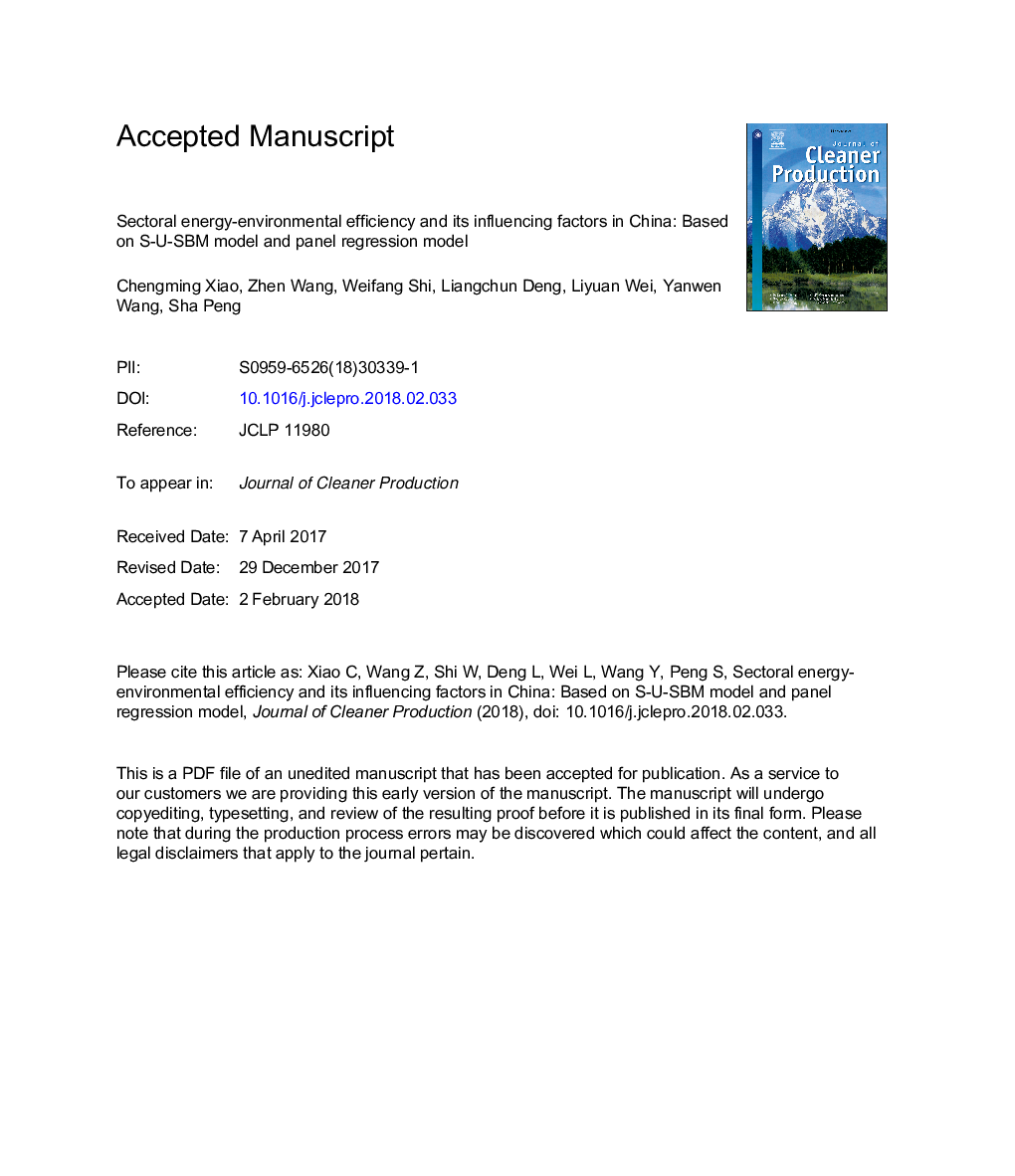| Article ID | Journal | Published Year | Pages | File Type |
|---|---|---|---|---|
| 8097371 | Journal of Cleaner Production | 2018 | 19 Pages |
Abstract
Energy use is often accompanied with air emissions including SOx, NOx, CO2, etc. It is essential to consider both the energy and environmental performance of various sectors to ensure better policymaking. This study considered air pollution by calculating energy-environmental efficiency (EEE) at the sectoral level. A few studies have previously applied the slack-based measure (SBM) model to multi-sector EEE assessments. Despite the advantages of SBM model, potential improvements have rarely been proposed. Therefore, a super-efficiency SBM model with undesirable outputs (S-U-SBM) was used to evaluate the EEE of 31 sectors in China. The policy implications of improving EEE, in microcosmic (potential improvement) and macroscopic (influencing factors) terms, were considered. The results indicated that for all sectors there was an overall trend of increasing EEE from 1995 to 2009, except for Rent and Other Business Activities, and Health and Social Work. The average annual potential for energy-saving and emission-reducing measures in all sectors was 1.396â¯Ãâ¯1017 J and 7.0780â¯Ãâ¯107 tons, respectively. Chemicals and Chemical Materials had the highest potential to save energy and reduce emissions. A panel regression indicated that the relationship between EEE and gross output was U-shaped for all industry, but had an inverted-U shape for heavy industry. Sectoral size, technology, and the proportion of energy demand satisfied by coal significantly influenced EEE.
Related Topics
Physical Sciences and Engineering
Energy
Renewable Energy, Sustainability and the Environment
Authors
Chengming Xiao, Zhen Wang, Weifang Shi, Liangchun Deng, Liyuan Wei, Yanwen Wang, Sha Peng,
